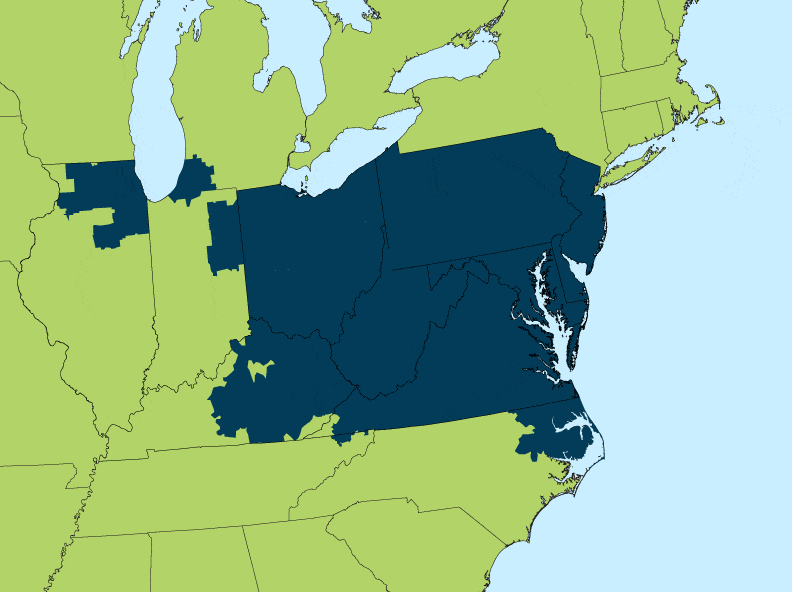FERC Order on PJM Capacity Market Reforms Draws Criticism for Hindering State Clean Energy Policies

The Federal Energy Regulatory Commission’s long-awaited order revamping PJM Interconnection LLC’s capacity market rules directs the grid operator to extend the minimum offer price, or MOPR, to all new state-subsidized resources. Clean energy advocates sharply criticized the move citing its potential to harm renewable generation seeking to participate in the capacity market. Democratic Commissioner Richard Glick dissented from the order, calling it an attempt to slow the region’s transition to a clean energy future and cautioned that it would raise capacity costs by at least $2.4 billion annually.
The order, issued on Dec. 19, would expand the MOPR to new or existing resources entitled to state subsidies, with certain exemptions. The ruling applies exemptions to existing resources participating in state renewable portfolio standard programs, existing demand response, energy efficiency and storage resources, and existing self-supply resources. Further, federal subsidies will not be subject to the MOPR. Previously, the MOPR required that new, non-exempt natural gas-fired generators offer at or above the offer price floor set by the grid operator.
Glick, the panel’s lone Democrat, issued a vehement dissent calling the order “illegal, illogical, and truly bad public policy.” The sweeping definition of subsidy will potentially subject much of the capacity market to MOPR, and the number of exemptions will entrench the current resource mix by excluding several existing classes from mitigation. The order permits the commission to zero out any state effort to address the externalities associated with electricity sales, including the Regional Greenhouse Gas Initiative and target any future carbon tax, cap-and-trade program, or clean energy standard, all of which would inevitably affect the wholesale market clearing price, according to Glick.
The Sierra Club called the rule disastrous, saying it will “essentially exclude new renewable energy resources from the PJM capacity market,” and pointed to predictions that the decision will cost almost $6 billion annually and raise emissions.
The Electric Power Supply Association, which represents competitive suppliers, commended the order, saying it helps advance a “durable and sustainable market design that meets the needs of the 21st century.”
In April 2018, PJM proposed two approaches to combat the price distortion in its markets as participation of sources receiving out-of-market state revenues continues to grow. In an order issued in June 2018, FERC agreed that state subsidies distort the market, finding that the existing market design relating to the MOPR applied in the capacity market is unjust and unreasonable. However, the commission rejected the approaches and ordered PJM to revamp its capacity market rules. The grid operator responded in October 2018, proposing an expanded MOPR that would apply to existing and new resources regardless of fuel and technology types, along with a unit-specific carve-out option for resources that do not want to be restricted by the MOPR. The “Resource Carve-Out,” or RCO mechanism would offer an alternative to MOPR allowing subsidized resources to obtain a capacity commitment without having to clear the capacity market. Recognizing that the mechanism would not completely protect market clearing prices from the “trade-off” resulting from uneconomic resources, the proposal also included an “Extended Resource Carve-Out” that adds a price adjustment method to restore clearing prices closer to the competitive outcome. In its latest order, FERC adopted an expanded MOPR rather than the RCO and extended RCO proposals.
PJM is required to submit a compliance filing by March 18 and provide a timeline for its next capacity auction.
EnerKnol Pulses like this one are powered by the EnerKnol Platform—the first comprehensive database for real-time energy policy tracking. Sign up for a free trial below for access to key regulatory data and deep industry insights across the energy spectrum.
ACCESS FREE TRIAL